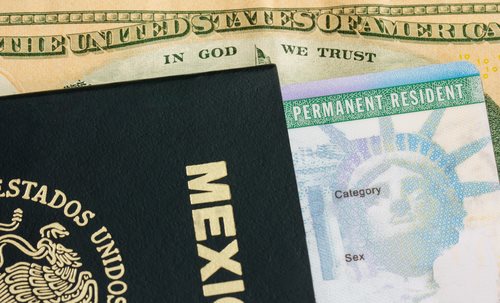
U.S. and Mexico Begin Humane Repatriation
Introduction
Immigration has been a hot topic in the United States for many years. As border crossings and illegal immigration continue to be prevalent issues, it is important to address the humane treatment of those who are being repatriated. The United States and Mexico have been working together to create a system of repatriation that prioritizes the safety and dignity of those who are being returned to their home countries. This article will explore the history of repatriation in the U.S. and Mexico, the current state of repatriation efforts, and the steps being taken to ensure a more humane process.
History of Repatriation in the U.S. and Mexico
Repatriation has a complex and often controversial history in both the United States and Mexico. In the 1930s, during the Great Depression, the United States government began a program of repatriation that urged Mexican immigrants to return to their home country. The effort was motivated by both economic concerns and anti-immigrant sentiment. Many people were deported without their consent, and the process was not designed with their safety or well-being in mind.
Mexico, too, has a history of repatriation. In the 1950s and 60s, Mexico implemented a program of repatriation that allowed Mexican migrants who had been in the United States for a certain length of time to receive government aid if they chose to return to Mexico. While this program was voluntary, it was also flawed. Many people were forced to return to Mexico without their consent, and the aid that was promised to them was often not delivered.
Current State of Repatriation Efforts
Today, both the U.S. and Mexico have more humanitarian approaches to repatriation, particularly for those who have been detained while attempting to cross the border. Under current policies, people who are apprehended at the border can be subject to expedited removal, which can result in their immediate deportation. However, both the U.S. and Mexico have implemented more comprehensive systems of repatriation that aim to ensure the safe and humane handling of migrants.
In the United States, Customs and Border Protection (CBP) is responsible for the repatriation of people who are apprehended at the border. When someone is scheduled for repatriation, they are transferred to a repatriation center, where they receive medical care, food, and other necessities. While they are there, they are connected with resources that can help them when they return to their home country.
Mexico also has a system in place for the repatriation of people who have been detained trying to cross the border. When someone is scheduled for repatriation, they are transferred to a repatriation center where they are provided with medical care and other basic necessities. Mexican authorities also work to connect those individuals with resources that can support them when they return home.
Steps Being Taken to Ensure Humane Repatriation
The U.S. and Mexico have taken steps to ensure that people who are being repatriated are treated with dignity and respect. For example, the United States has implemented a system of “staggered repatriation,” which means that people are often not repatriated immediately after they are detained. Instead, they are held in detention for a period of time to ensure that they are healthy and able to return to their home country safely.
Mexico has also taken steps to ensure that people who are being repatriated are treated humanely. Mexican authorities work to ensure that people are not repatriated immediately after they are detained, but rather are given time to recover and prepare for their return home. In addition, Mexico has programs in place to provide assistance to people who are being repatriated to help them reintegrate into their communities.
The U.S. and Mexico have also taken steps to improve communication between the two countries regarding repatriation. For example, in 2014, the U.S. and Mexico signed an agreement that established a framework for the repatriation of Mexican nationals. This agreement includes protocols for the timely and safe repatriation of people who have been detained at the border.
Conclusion
The issue of repatriation is complex and controversial, but steps are being taken to ensure that people who are being returned to their home countries are treated humanely and with dignity. Both the U.S. and Mexico have implemented comprehensive systems to support the repatriation process, and policies are continuing to be developed and reviewed to ensure that the process is as safe and humane as possible.
Through collaboration, open communication, and ongoing evaluation of policies and practices, the U.S. and Mexico can continue to make progress in the area of repatriation. The ultimate goal is to ensure that people who are being returned to their home countries are treated with respect and compassion, and that their dignity is always a top priority. As we move forward, we must continue to work together to create a more just and humane approach to repatriation.
On October 2, 2012, the Immigration and Customs Enforcement (ICE) and the Mexican Ministry of the Interior announced the start of a project called the Interior Repatriation Initiative, or IRI. The new initiative plans to “provide humane, safe and orderly repatriation” of Mexican citizens who returned to the country. The new initiative plans to return the Mexican citizens to their hometowns—even in the interior of the country—instead of simply returning them to towns on the U.S. and Mexican border.
ICE’s Enforcement and Removal Operations now plans to transport Mexican citizens via charter aircraft who traveled from the interior of Mexico. The chartered flights will fly to Mexico City, and then the Government of Mexico will provide ground transportation to their hometowns.
Many of the removed Mexican citizens are not from the northern border towns where they were historically repatriated. When the U.S. government would repatriate the Mexican citizens to the border towns, they had a higher chance of entering the United States again, joining criminal organizations, or even losing their life.
ICE Director John Morton states, “IRI reflects our commitment and ongoing bilateral effort with the government of Mexico to ensure strong, humane and effective enforcement of both nations’ immigration laws. This initiative will better ensure that individuals repatriated to Mexico are removed in circumstances that are safe and controlled.”
The Undersecretary of Mexico’s population, migration and religious affairs, Gustavo Mohar Betancourt, stated, “This initiative aims to collaborate and fully support border state authorities by reducing the number of Mexican nationals who are repatriated to the border region. The newly repatriated, often with no means to return home, are susceptible to becoming a part of criminal organizations as a means of survival.”
The first flight for repatriation occurred on October 2 from the El Paso International Airport, and the flight contained 131 Mexican nationals.
Source: U.S. Immigration and Customs Enforcement



























